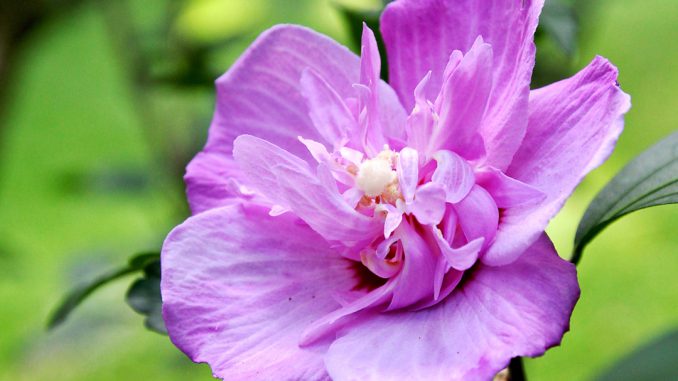
After a long period indoors, we all look forward to a walk in the park and some warm days of garden activity. There is much catching up to do, but best to follow pruning guidelines before cutting woody shrubs. And learn how to spot a potential bounty of roses before you cut too quickly.
What to prune? When to prune? How to prune? Pruning might seem like one of nature’s great mysteries. Some gardeners begin pruning at the first hint of spring weather and assume that all woody plants will benefit from trimming, or even considerable reduction. Unfortunately, this enthusiasm often backfires, resulting in unanticipated response in plant growth. More satisfaction can be anticipated with some basic information, and a clear statement of what you want to achieve.
Most pruning would be unnecessary if we install plants of appropriate mature size for available garden space. Knowing a plant’s potential size before purchase could save a lot of pruning anguish. The only need for a cutting blade would be to remove dead, disfigured or diseased wood and winter damage from ice and snow. But annual pruning seems to focus on unanticipated plant dimensions – a woody shrub is too small, or too large – and that is a more complex matter. Timing is the key to achieving desired results.
If you want to invigorate a young shrub (in place for fewer than five years) and trigger strong new growth, prune in late winter or earliest spring before bud break. Remove no more than 25% of any branch length. This will consolidate the burst of spring energy in buds behind the cuts, resulting in a strong surge of new growth. Fertilize around the plant’s crown in late spring, after leaf growth is established.
If you want to rejuvenate an older shrub, prune in earliest spring before bud break, first removing dead and damaged wood. If there are too many living canes or branches in the shrub’s interior, remove up to a third of the oldest wood, cutting at the place from which the cane springs. This will allow light and air movement into the shrub interior, stimulating new growth. An additional third of older branches can be removed in the next two spring seasons, resulting in full renovation in the fourth year. Provide fertilizer around the shrub’s crown in spring after leaves are well established.
If you want to decrease the size of a shrub, allow the plant to spend its initial spring growth spurt. Wait until growth slows in mid-summer (when the plant will have less energy to replace pruned wood), cut out longer and older branches from where they begin deep in the interior, removing up to 50%. This will create a more open and less massive bulk of wood. Attempting to shear or cut back from the tip ends will only trigger a strong growth reaction next spring. Every single cut from the tips will activate two new buds behind the cut, effectively doubling the woody growth. Withhold fertilizer, and consider replacement with another plant of appropriate mature size.
Special timing for flowering shrubs
Flowering shrubs fall into categories of early- (such as forsythia and lilac) and late-blooming (such as weigela and rose of Sharon). While pruning guidelines are similar for these shrubs, their timing is different. Both categories flower at their appropriate times, and then form concealed buds for next year’s blooms. Prune too early (before the current bloom begins) and you’ll be cutting off the current season’s flowers. Prune too late (after bloom finishes) and you‘ll remove the buds for next year’s flowers. There is a four-week window of time in which you can safely prune without removing the next year’s flowers. Enjoy flowers of the current season until their bloom is finished, and prune within the following four weeks before shrubs form buds for next year’s flowers.
If it seems complicated to remember the timing for your early- and late-flowering shrubs, an easy way to keep track of the four-week pruning window is by using a calendar. When any shrub has just a few flowers left on it, mark that day on the calendar. Then draw a red box around the four-week date that is the end of safe days to prune without taking off next year’s flower buds. This visual display is a foolproof guide to pruning in a timely manner and guarantees a gorgeous flower display every year.
And a trick with roses
Many modern roses have extensive breeding histories and carry the genes of dozens (and sometimes hundreds) of antique roses that are present in their genealogical background. These could have been roses of many kinds and categories, each with defining characteristics that can unpredictably appear in modern hybrids.
If your rose shrub produces a long cane (five to seven feet tall) from wood that is above ground and out of character with other canes in the plant, that might be an indication of a pillar or climbing rose in its breeding history. Instead of pruning the long cane out, consider the potential for buds it may carry in the wood. Hidden buds can be triggered by carefully bending the cane in a gentle arc, pulling it 45-60 degrees to one side, and anchoring the cane against a fence, wall or stake. If concealed buds are present, the semi-horizontal position will encourage them to sprout twigs and flowers. Be sure that the anchoring is strong enough to support any new growth if this trick works. Good luck!


